Papers by Vladimir Bencko
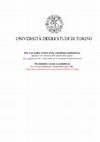
American Journal of Epidemiology, 2013
Large registry-based cohort studies from Scandinavia observed increased lung cancer risks among h... more Large registry-based cohort studies from Scandinavia observed increased lung cancer risks among hairdressers, but could not adjust for smoking; our objective was to evaluate the effect of adjusting for smoking and other confounders in a pooled database of 16 case-control studies conducted in Europe, Canada, China and New Zealand between 1985 and 2010 (SYNERGY project). Lifetime occupational and smoking information was collected through interviews from 19,369 cases of lung cancer and 23,674 matched populations or hospital controls. Overall, 170 cases and 167 controls ever worked as hairdresser or barber. The odds ratios (ORs) for lung cancer in women were 1.65 (95% CI: 1.16, 2.35) without adjustment for smoking and 1.12 (95% CI: 0.75, 1.68) with adjustment; however, women employed before 1954 experienced an increased lung cancer risk also after adjustment for smoking (OR 2.66, 95% CI: 1.09, 6.47). The ORs in male hairdressers/barbers were generally not elevated, except for an increased OR for adenocarcinoma in long-term barbers (OR 2.20, 95% CI: 1.02-4.77). Our results suggest that the increased lung cancer risks among hairdressers and barbers are due to their smoking behavior; single elevated risk estimates should be interpreted with caution when not replicated in other studies.
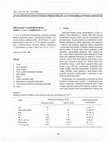
Chemicke Listy, 1998
Současný bouřlivý rozvoj automobilismu v České republice, v jehož důsledku se v období 1990-1998 ... more Současný bouřlivý rozvoj automobilismu v České republice, v jehož důsledku se v období 1990-1998 intenzita automobilové dopravy zvýšila více než za předchozích 60 let dohromady, výrazně přispívá ke znečišťování ovzduší. Přímým důsledkem je nárůst zdravotních rizik spojených s expozicí naší populace škodlivým látkám obsažených v automobilových emisích. Z hlediska složení pohonných hmot je zřejmé, že kromě vody, která je neškodná a oxidu uhličitého, způsobujícího skleníkový efekt, obsahují spaliny i řadu dalších organických látek obsahujících kyslík, dusík, síru a případně další prvky (viz tabulka I). Významnou roli v tomto směru hrají zejména oxidy dusíku a ozon, které tvoří významnou součást tzv. letního neboli fotochemického smogu, a dále těkavé organické látky (např. benzen a jeho deriváty), polycyklické aromatické uhlovodíky (PAH), nitrované polycyklické aromatické uhlovodíky (NPAH), různé aldehydy a další škodlivé látky, k jejichž výraznému nárůstu došlo v souvislosti se zaveden...
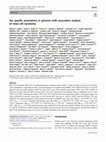
European Journal of Human Genetics
Renal cell carcinoma (RCC) has an undisputed genetic component and a stable 2:1 male to female se... more Renal cell carcinoma (RCC) has an undisputed genetic component and a stable 2:1 male to female sex ratio in its incidence across populations, suggesting possible sexual dimorphism in its genetic susceptibility. We conducted the first sex-specific genome-wide association analysis of RCC for men (3227 cases, 4916 controls) and women (1992 cases, 3095 controls) of European ancestry from two RCC genome-wide scans and replicated the top findings using an additional series of men (2261 cases, 5852 controls) and women (1399 cases, 1575 controls) from two independent cohorts of European origin. Our study confirmed sex-specific associations for two known RCC risk loci at 14q24.2 (DPF3) and 2p21(EPAS1). We also identified two additional suggestive male-specific loci at 6q24.3 (SAMD5, male odds ratio (OR male) = 0.83 [95% CI = 0.78-0.89], P male = 1.71 × 10 −8 compared with female odds ratio (OR female) = 0.98 [95% CI = 0.90-1.07], P female = 0.68) and 12q23.3 (intergenic, OR male = 0.75 [95% CI = 0.68-0.83], P male = 1.59 × 10 −8 compared with OR female = 0.93 [95% CI = 0.82-1.06], P female = 0.21) that attained genome-wide significance in the joint meta-analysis. Herein, we provide evidence of sex-specific associations in RCC genetic susceptibility and advocate the necessity of larger genetic and genomic studies to unravel the endogenous causes of sex bias in sexually dimorphic traits and diseases like RCC.

Occupational and Environmental Medicine, 2016
Objectives Firefighters are potentially exposed to a wide variety of chemical compounds during th... more Objectives Firefighters are potentially exposed to a wide variety of chemical compounds during the course of their work and inhalation is considered to be the major source of exposure. A large number of human carcinogens have been detected in smoke at fires. The aim was to investigate the risk of lung cancer among firefighters, while controlling for smoking habits. Methods We used data from the SYNERGY project including pooled information on lifetime work histories and smoking habits for 14,748 male lung cancer cases and 17,543 controls from 14 case-control studies conducted in Europe, Canada, New Zealand and China. There were 190 men who had ever worked as a firefighter (based on ISCO-68), among them 86 cases and 104 controls. Odds ratios (OR) and 95% confidence intervals (CI) were estimated by unconditional logistic regression, adjusted for study, age, smoking, and ever employment in an occupation with established lung cancer risk. Results We observed no increased risk of lung cancer in firefighters, neither before (OR = 1.03, 95% CI: 0.77–1.38) nor after (OR = 0.95, 95% CI: 0.68–1.32) adjustment for smoking and exposure to other occupational lung carcinogens. There was no evidence of a trend of increasing lung cancer risk with increasing duration of work as a firefighter (p = 0.58) and no significant heterogeneity in lung cancer risk among firefighters across the studies. None of the major histological subtypes of lung cancer was associated with work as a firefighter. Conclusions We found no evidence of an excess lung cancer risk related to occupational exposure as a firefighter, when lifetime history of tobacco smoking and exposure to other occupational lung carcinogens was taken into account.

Cancer Research, 2011
“Occupational exposure as a painter” was classified as carcinogenic to humans by the Internationa... more “Occupational exposure as a painter” was classified as carcinogenic to humans by the International Agency for Research on Cancer (IARC) based on increased risks of cancers of the lung, bladder, and mesothelioma. Painters are exposed to a mixture of known and suspected lung carcinogens; thus it has been difficult to identify the specific agent(s) contributing to the elevated risk of lung cancer. Although the exposure to occupational carcinogens could differ according to the job duties of a painter, it is unknown whether the risk of lung cancer differs according to the painter type. Data from the SYNERGY study were used to evaluate the risk of lung cancer associated with ever working as a painter, duration of employment, and type of painter (classified according to ISCO and ISIC codes). SYNERGY is a pooled effort of 11 case-control studies in European countries and Canada that includes detailed individual data on smoking for 13389 lung cancer cases and 16384 age- and sex-matched controls. Among the cases and controls, there were 462 and 383 painters, respectively. Multivariable unconditional logistic regression models were adjusted for age, gender, centre, tobacco pack-years, and occupational exposures to asbestos, silica, polycyclic aromatic hydrocarbons, chromium VI and nickel as assessed by a job-exposure matrix. An odds ratio (OR) of 1.31 (95% CI, 1.12-1.45) was associated with ever working as painter and the risk of lung cancer increased with increasing years of employment (p-value for trend = 0.0004). A similar magnitude of effect and trend with duration of employment was observed in construction painters (ISCO 93120/ISIC 5000) but not in automobile painters (ISCO 93960/ISIC 3843,9513). Results were similar when restricted to men but uninformative for women only due to small numbers. There was no significant difference in risk when stratified by histological type and restricted to never smokers. Painters, particularly in the construction industry, are at an increased risk for lung cancer and this risk increases with duration of employment. These results will be further refined by specific type of painter and by including additional studies to increase the precision of the risk estimates. Citation Format: {Authors}. {Abstract title} [abstract]. In: Proceedings of the 102nd Annual Meeting of the American Association for Cancer Research; 2011 Apr 2-6; Orlando, FL. Philadelphia (PA): AACR; Cancer Res 2011;71(8 Suppl):Abstract nr 1877. doi:10.1158/1538-7445.AM2011-1877
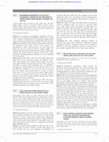
International Journal of Cancer, 2014
Objectives To characterise geographical distribution and time trends of chronic kidney disease (C... more Objectives To characterise geographical distribution and time trends of chronic kidney disease (CKD) mortality in the context of the epidemic of Mesoamerican nephropathy (MeN), likely related to occupational heat stress and other, unknown, factors. Method Vital statistics (1970-2012) provided deaths from CKD and unspecified renal failure. Data of four censuses were extrapolated to derive person-years by sex and 10-year age groups for the seven provinces and 81 counties. SMRs were compared for three time periods between provinces and between counties, with national rates as reference. To assess time trends, age-specific and age-standardised mortality rates were computed for 5-year periods. Results During 1970-2012, 3843 men and 2452 women died from CKD. In the Guanacaste province, the SMR for 1997-2012 was four-fold in men and twofold in women. In Guanacaste, CKD mortality increased from the mid-1970s in men, and mid-1980s in women. Age-standardised rates per 100.000 in men aged ≥30 increased from 5.8 in the early seventies to 75.0 in 2007-2012, compared to 5.9 to 16.2 in the rest of Costa Rica. For women, rates increased from 4.5 to 20.7 in Guanacaste versus 4.2 to 9.7 in the rest of the country. Within Guanacaste, there was marked spatial variation in mortality between counties, with patterns being consistent between time periods but different for men and women. Conclusions Guanacaste is a heterogeneous CKD "hot spot," affecting mostly men, but to lesser extent also women. CKD seemed high already four decades ago in the province. These findings are pertinent for etiologic research.

To investigate whether renal cell carcinoma (RCC) histologic subtypes possess different etiologie... more To investigate whether renal cell carcinoma (RCC) histologic subtypes possess different etiologies, we conducted analyses of established RCC risk factors by subtype (clear cell, papillary and chromophobe) in two case-control studies conducted in the United States (1,217 cases, 1,235 controls) and Europe (1,097 cases, 1,476 controls). Histology was ascertained for 706 U.S. cases (58% of total) and 917 European cases (84%) through a central slide review conducted by a single pathologist. For the remaining cases, histology was abstracted from the original diagnostic pathology report. Case-only analyses were performed to compute odds ratios (ORs) and 95% confidence intervals (CI) summarizing subtype differences by age, sex and race. Case-control analyses were performed to compute subtype-specific ORs for other risk factors using polytomous regression. In case-only analyses, papillary cases (N = 237) were older (OR = 1.2, 95% CI = 1.1-1.4 per 10-year increase), less likely to be female (OR = 0.5, 95% CI = 0.4-0.8) and more likely to be black (OR = 2.6, 95% CI = 1.8-3.9) as compared to clear cell cases (N = 1,524). In case-control analyses, BMI was associated with clear cell (OR = 1.2, 95% CI = 1.1-1.3 per 5 kg/m(2) increase) and chromophobe RCC (N = 80; OR = 1.2, 95% CI = 1.1-1.4), but not papillary RCC (OR = 1.1, 95% CI = 1.0-1.2; test versus clear cell, p = 0.006). No subtype differences were observed for associations with smoking, hypertension or family history of kidney cancer. Our findings support the existence of distinct age, sex and racial distributions for RCC subtypes, and suggest that the obesity-RCC association differs by histology.
American Journal of Epidemiology, 2014
Molecular Psychiatry, 2014
This paper has been peer-reviewed but dos not include the final publisher proof-corrections or jo... more This paper has been peer-reviewed but dos not include the final publisher proof-corrections or journal pagination.
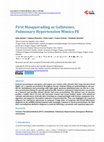
Case Reports in Clinical Medicine, 2015
Patients presenting to emergency and urgent care centers with calf pain after long and short-haul... more Patients presenting to emergency and urgent care centers with calf pain after long and short-haul flights are a common presentation throughout Europe. Patients fitting an epidemiological risk profile for cholelithiasis and presenting with right upper quadrant abdominal pain can also be a common presentation fitting of a specific patient profile. However, pulmonary hypertension can present in a nuanced and possible missed chronic and acute presentation. The patient case we present profiles a mildly obese 54-year-old Caucasian woman and recent holiday maker with unilateral calf pain and shortness of breath after traveling on a long-haul flight with tertiary symptoms of indigestion and epigastric discomfort indicative of gastroenteritis. This case highlights the required diligence for emergency physicians to maintain a high index of suspicion and broad differential diagnosis in the undifferentiated patient with seemingly common or classic presentations. We find that a serendipitous definitive diagnosis is made by following a systematic and organized approach.
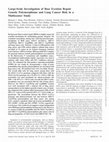
JNCI Journal of the National Cancer Institute, 2005
Background: Base excision repair (BER) is a highly conserved essential mechanism for maintaining ... more Background: Base excision repair (BER) is a highly conserved essential mechanism for maintaining genome integrity. We examined associations among four well-characterized polymorphisms of BER genes (OGG1 Ser326Cys, XRCC1 Arg194Trp, XRCC1 Arg280His, and XRCC1 Arg399Gln) and lung cancer risk. Methods: A total of 2188 patients with lung cancer and 2198 control subjects without lung cancer recruited at 15 centers in six Eastern European countries from February 1998 to October 2002 provided DNA samples for genotype analysis. Genetic polymorphisms were analyzed by the fl uorescence 5 ′ exonuclease and Amplifl uor assays. Unconditional multivariable logistic regression was used to estimate odds ratios (ORs) and 95% confi dence intervals (CIs). We estimated the false-positive reporting probability (FPRP) for our results by incorporating a range of prior probabilities that specifi c polymorphisms are associated with lung cancer risk. All statistical tests were two-sided. Results: The overall odds ratio for lung cancer among those with the OGG1 Cys/Cys genotype compared with those with the OGG1 Ser/Ser genotype was 1.34 (95% CI = 0.95 to 1.88); the association was most prominent for adenocarcinoma risk (OR = 1.66, 95% CI = 1.04 to 2.66). Overall, the XRCC1 polymorphisms were not associated with the risk of lung cancer. However, the XRCC1 Arg194Trp and Arg280His variants were each associated with a reduced risk of lung cancer among subjects in the highest quartile of pack-years of smoking compared with common allele homozygotes (ORs of 0.65 [95% CI = 0.46 to 0.93] and 0.56 [95% CI = 0.36 to 0.86], respectively). The associations between the OGG1 Cys/Cys genotype and adenocarcinoma risk and between XRCC1 Arg194Trp polymorphism and lung cancer risk among heavy smokers remained robust given prior probabilities of 25% (FPRP = 0.238) and 10% (FPRP = 0.276), respectively. Conclusions: Our results do not support a major independent role of BER gene polymorphisms in lung cancer risk. However, we cannot exclude the possibility that the OGG1 Ser326Cys and XRCC1 Arg194Trp polymorphisms play minor roles in lung carcinogenesis. [
European urology, Sep 28, 2018
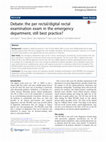
International journal of emergency medicine, Jan 27, 2018
Emergency medicine practice in the UK and Ireland offers a junior and middle grade doctor great l... more Emergency medicine practice in the UK and Ireland offers a junior and middle grade doctor great learning opportunities that force engagement with multiple specialties, life-saving procedures, exposure to a myriad of patient presentations, and opportunities for best practices in medicine. The emergency department (ED) can be a hectic and dynamic environment; communication from the ED to specialists is essential to ensure best clinical outcomes for patients. The "per rectal" (PR) or "digital rectal exam" (DRE) can be a very difficult diagnostic test for even the most skilled operator to discern pathological versus normal; we propose this is especially the case in the emergency department patient population. Some specialists require this exam performed by an unskilled junior doctor with varying results prior to reviewing a referred and sick patient. The PR/DRE benefits may be limited in the ED setting for some pathologies, and the result of the exam may have limited...
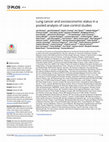
PloS one, 2018
An association between low socioeconomic status (SES) and lung cancer has been observed in severa... more An association between low socioeconomic status (SES) and lung cancer has been observed in several studies, but often without adequate control for smoking behavior. We studied the association between lung cancer and occupationally derived SES, using data from the international pooled SYNERGY study. Twelve case-control studies from Europe and Canada were included in the analysis. Based on occupational histories of study participants we measured SES using the International Socio-Economic Index of Occupational Status (ISEI) and the European Socio-economic Classification (ESeC). We divided the ISEI range into categories, using various criteria. Stratifying by gender, we calculated odds ratios (OR) and 95% confidence intervals (CI) by unconditional logistic regression, adjusting for age, study, and smoking behavior. We conducted analyses by histological subtypes of lung cancer and subgroup analyses by study region, birth cohort, education and occupational exposure to known lung carcinoge...
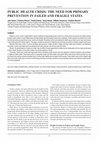
Central European journal of public health, 2017
A new 'normal' in global affairs may be erupting from large global powers to that of non-... more A new 'normal' in global affairs may be erupting from large global powers to that of non-state actors and proxies committing violence through scaled conflict in a post-Westphalian world generating significant global health policy challenges. Health security of populations are multifactorial and indirectly proportional to war, conflict and disaster. Preventing conflict and avoiding the health vacuum that occurs in war and violence may be best practices for policy makers. This paper considers an approach of applying clinical primary prevention principles to global health policy. Brief policy review of current standards and practices in health security in fragile and failed states and prevention; and definitions discussion. A short case study series are presented with best practices, with risk and outcome review. The global balance of power and order may be shifting through geopolitical transference and inadequate action by major global power brokers. Health security in at risk...
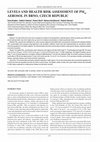
Central European Journal of Public Health
Objective: The main effort of this work was to evaluate the situation of the atmosphere in select... more Objective: The main effort of this work was to evaluate the situation of the atmosphere in selected regions of Brno during the years 2009-2013 and to estimate health risks which might come up due to the increased concentrations of airborne particulate matter. Methods: PM 10 samples were collected in four areas varying in degree of automobile traffic using automatic and gravimetric sampling methods. PM 10 concentrations were assessed using Spearman's rank correlation coefficient. Health risks were estimated based on calculation of relative risks and population for four health endpoints. The selected health outcomes were premature mortality, cardiovascular disease, respiratory disease, and chronic bronchitis. Results: The highest PM 10 concentrations were measured in two regions with high traffic loads T1, T2 and background region B2. The values
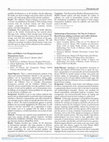
Prehospital and Disaster Medicine
guideline development or on the frontline, directly addressing the health care needs of refugees ... more guideline development or on the frontline, directly addressing the health care needs of refugees and asylum seekers. In the first instance, the work-group addressed five priority conditions. Results: The collection "Health of Refugees and Asylum Seekers in Europe" was published on December 2, 2016, hosting curated resources from the Cochrane Library and other research outputs, categorized into guidelines; systematic reviews; articles; and other information. Conclusion: Since publication, the refugee health collection, found on the website EvidenceAid.org, has received almost 600 page views, ranking it third amongst most viewed pages after the homepage and the resources tab for that period. On average, users have been spending 2.30 minutes on the page, suggesting the content is commanding attention. We will continue to encourage an evidence-based response to this crisis, and will report on usage of both collections at the conference.

Uploads
Papers by Vladimir Bencko